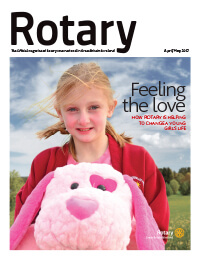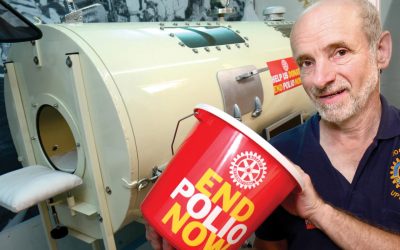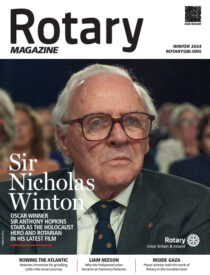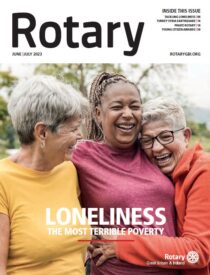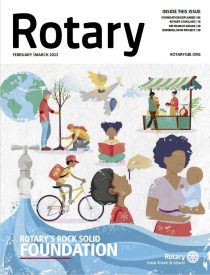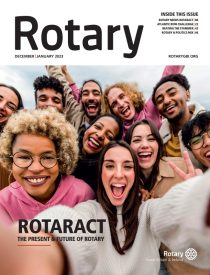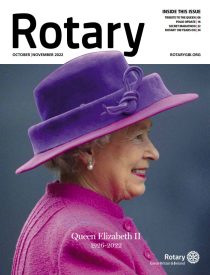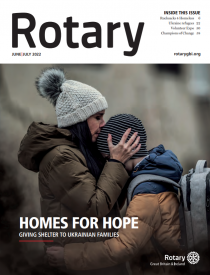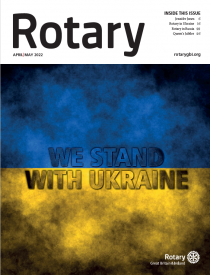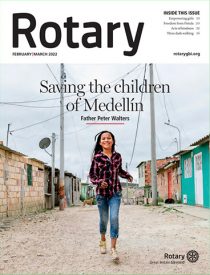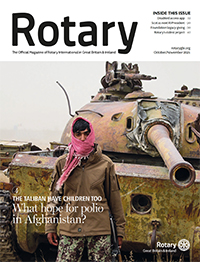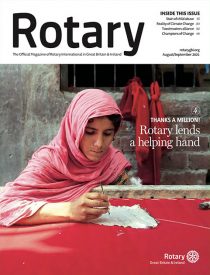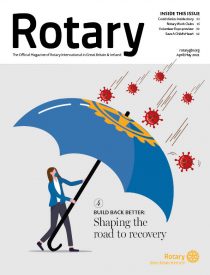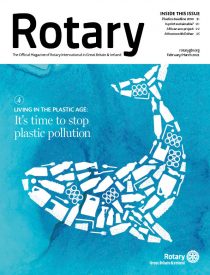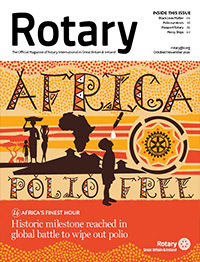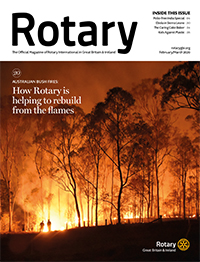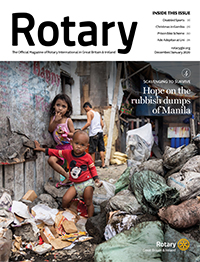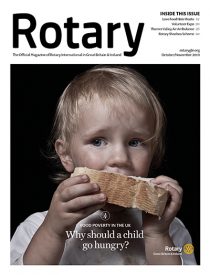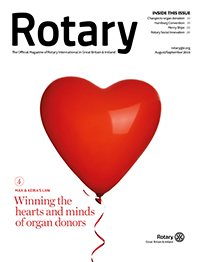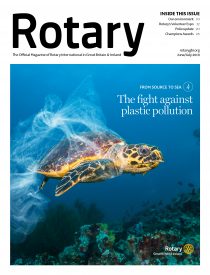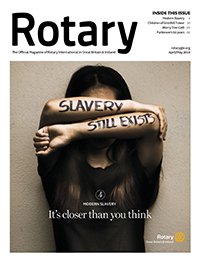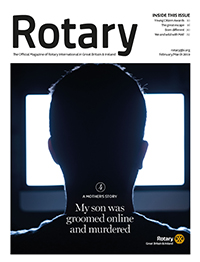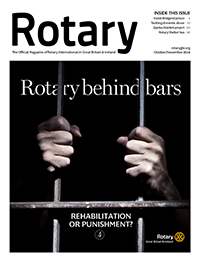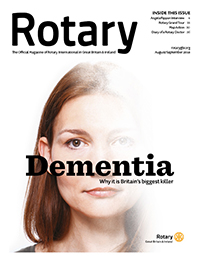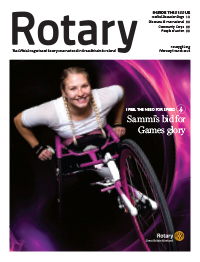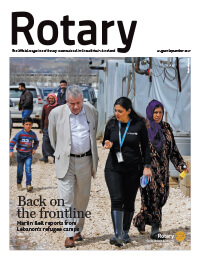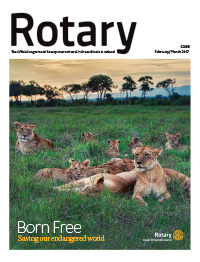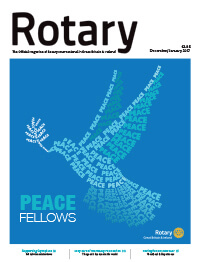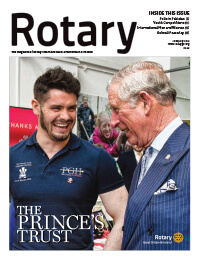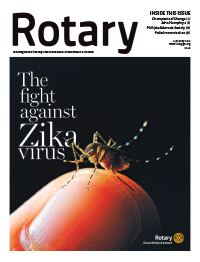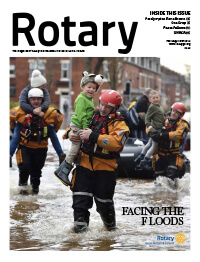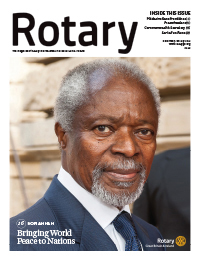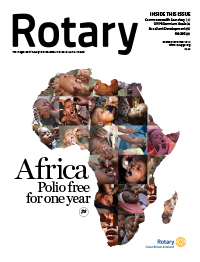As we walked through the slums of Delhi to make sure that no child under the age of five had missed being immunised against polio, I was struck and moved by the magnitude of what Rotarians have achieved.
By putting two drops of polio vaccine into each child’s mouth, we were taking part in a moment of history because we are now closer than ever to reaching Rotary’s goal of a polio-free world.
I joined a team of about 70 British Rotarians who had travelled to India to take part in a mass National Polio Immunisation Campaign (NID).
We were among more than 100,000 Rotarians helping with the NID across India, determined to keep up the battle to eradicate this disease.
“The polio warriors from Europe” is how the Indian Rotarians in Delhi described us: on the front line, joining them in the fight to make history and wipe out this disease now and forever. It was a moving tribute.
Rotarians from across Great Britain and Ireland have been doing this for many years now co-ordinated by Rotarian Mike Yates. I was last there in 2009 when I produced films for Rotary and BBC News with TV presenter Konnie Huq about our End Polio Now campaign. This year, we joined Rotarians from Belgium, Sweden, Japan, Australia and the United States.
India has no cases of polio for six years and was certified free of the disease in 2014.”
India has had no cases of polio for six years and was certified free of the disease in 2014, and the Rotarians there are determined to ‘keep India polio-free’, the wording on our blue and red caps.
We were at polio booths set up for parents to bring their children to be immunised before going house to house to make sure that no child had been missed.
Across India for this National Immunisation Day, there were 709,000 polio vaccination booths with 2.5 million vaccinators delivering 225 million doses of polio vaccine in a huge operation that aimed to deliver drops to 172 million under-fives in one go.
At one polio booth in a poor part of Delhi, we were surrounded by dozens of children jostling in a long line and then enthusiastically showing us their little fingers (or pinkies) that had been dyed purple to show that they had received their polio drops. A sea of smiling faces!
My Purple4Polio teddy bear called “Pinky” was a favourite with the children who took delight in kissing its face.
The presence of visiting Rotarians at immunisation booths increases the immunisation levels as children come in large numbers to see us.
A health correspondent from The Independent travelled with us British Rotarians to chart this story.
India was seen as one of the most challenging places on earth to eradicate polio and we are now on the brink of a historic milestone. There were just 37 cases of polio worldwide in 2016 in three countries Pakistan, Afghanistan and Nigeria. That compares with about a thousand cases a day in 125 countries when Rotary started its campaign to rid the world of polio in 1985.
This led to the launch of the Global Polio Eradication Initiative in 1988 when Rotary partnered with the World Health Organization, Unicef and the US Centers for Disease Control and Prevention and, more recently, the Bill & Melinda Gates Foundation, working with national governments to eradicate polio worldwide.
The presence of visiting Rotarians at immunisation booths increases the immunisation levels as children come in large numbers to see us.”
Polio cases have now been cut by 99.9% and global health organisations are optimistic that the last ever case of polio could be recorded this year. We need three years of no cases anywhere in the world to declare the world polio-free.
The world is on the verge of eradicating this disease that has caused paralysis and death, mostly in children, and this is thanks to the dedication and determination of Rotarians who started and have spearheaded the campaign for a polio-free world for more than 30 years.
We are near to making history and must finish the job!
My journey to India with British Rotarians proves that it can be done.
Making a difference
By Mike Yates, Chairman Polio Sub-Committee
The Prime Minister of India said he had only one word for the volunteers who had helped India become polio-free. That word was “gratitude”. Without 2.5 million working days of volunteers, the huge task of mass immunisation of 172 million children under five-years-old would not have been possible.
These volunteers have come from Indian Rotary clubs, helped by Rotarians from Belgium, Sweden, USA and Japan as well as student nurses.
Over the last 12 years a small 0.2% of these came from the Rotary Britain & Ireland volunteer groups who have gone to help our Indian colleagues.
We have been statistically small, but recognised to be very important. Our groups have been directed to help in districts classed as high risk due to them having poor sanitation, high population density and being near to borders with Pakistan and Afghanistan. The aim now is to keep India polio-free.
The enhanced importance of a volunteer from Britain & Ireland is that in a Delhi slum or remote village, we do attract more children to one of the many immunisation booths set up all over India.
One example came to light when the Senior Epidemiologist of Amritsar visited a booth where last year they immunised 152 children. This year, with three volunteers from our islands, they had immunised 361 by the time of his visit in the afternoon.
Rotary volunteers with their spouses or adult children are required to be in India from Friday, before the NID, until Monday evening after the NID, which is always on Sunday.
It is not a holiday but most volunteers stay before or after the NID to be a tourist.
This year 66 volunteers went to help the January NID, from Rotary clubs stretching from Guernsey to Orkney and including the Rotary Britain & Ireland President Eve Conway. After a briefing in Delhi on Friday, January 27th, they divided into groups going to Amritsar, Delhi and Bhiwadi where on Saturday they helped publicise the next day’s NID. Then on Sunday they were in teams of three at the many booths, giving drops, marking the little fingers and trying to draw more children to the booths.
On Monday, they went house-to-house with a health worker, trying to find the children missed on Sunday.
In 2016, India introduced immunisation by injection which is safer, long lasting but more expensive.
The switch is progressing well with 65% coverage on average but as low as 40% coverage in slum areas so they need to be supplemented with oral drops to keep the level of protection above 90%.
There will be National Immunisation Days continuing into 2018 and possibly 2019.








